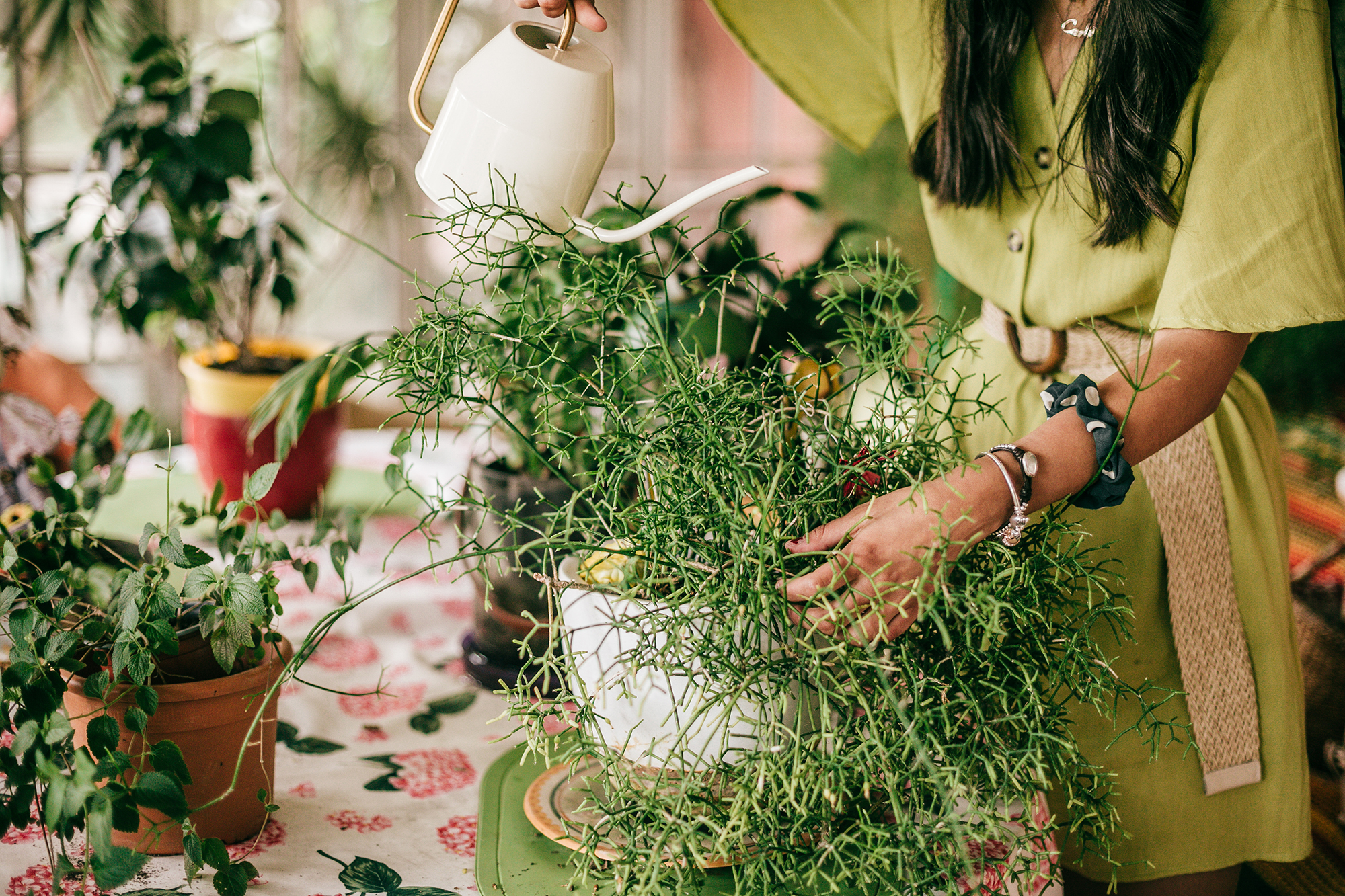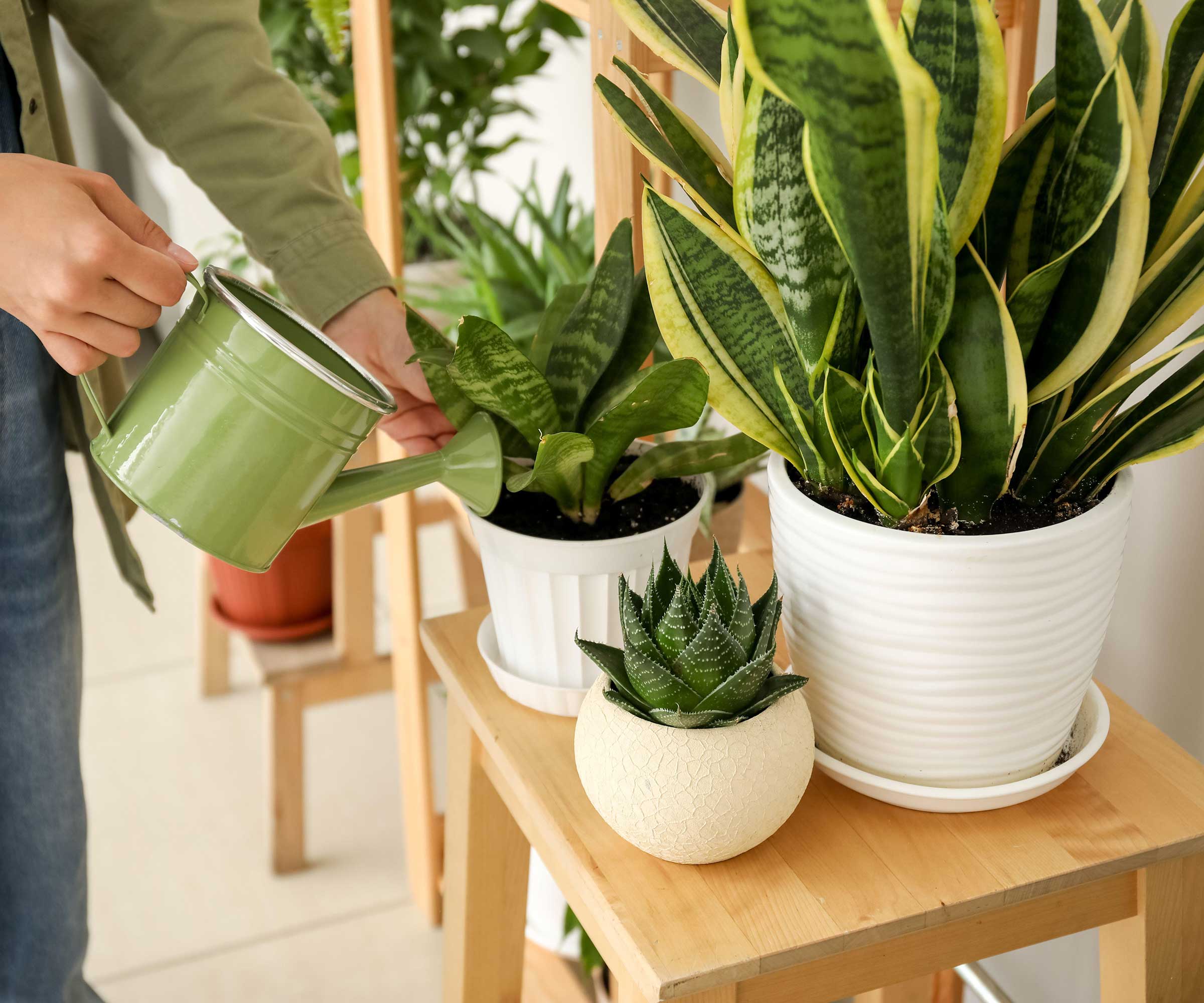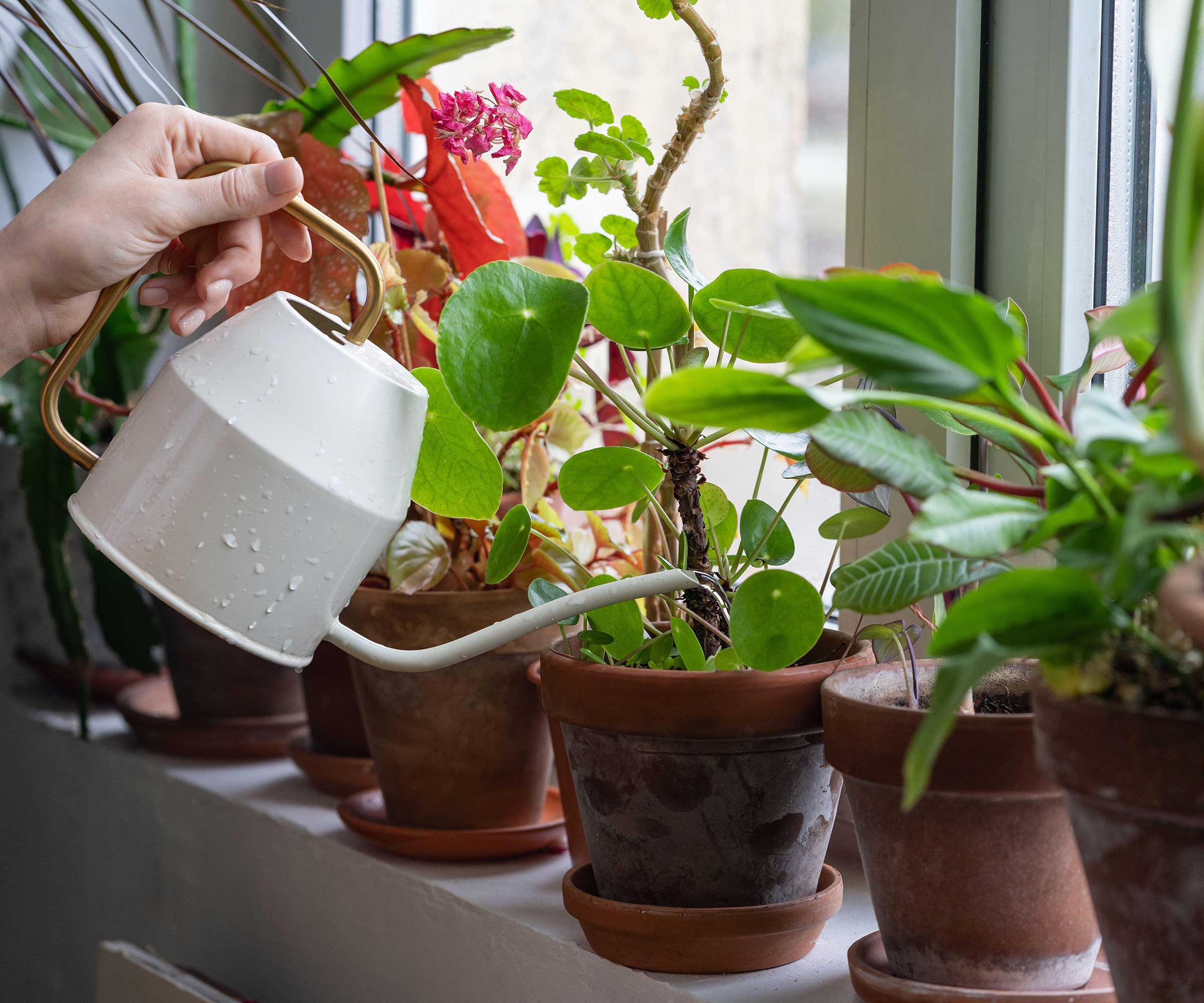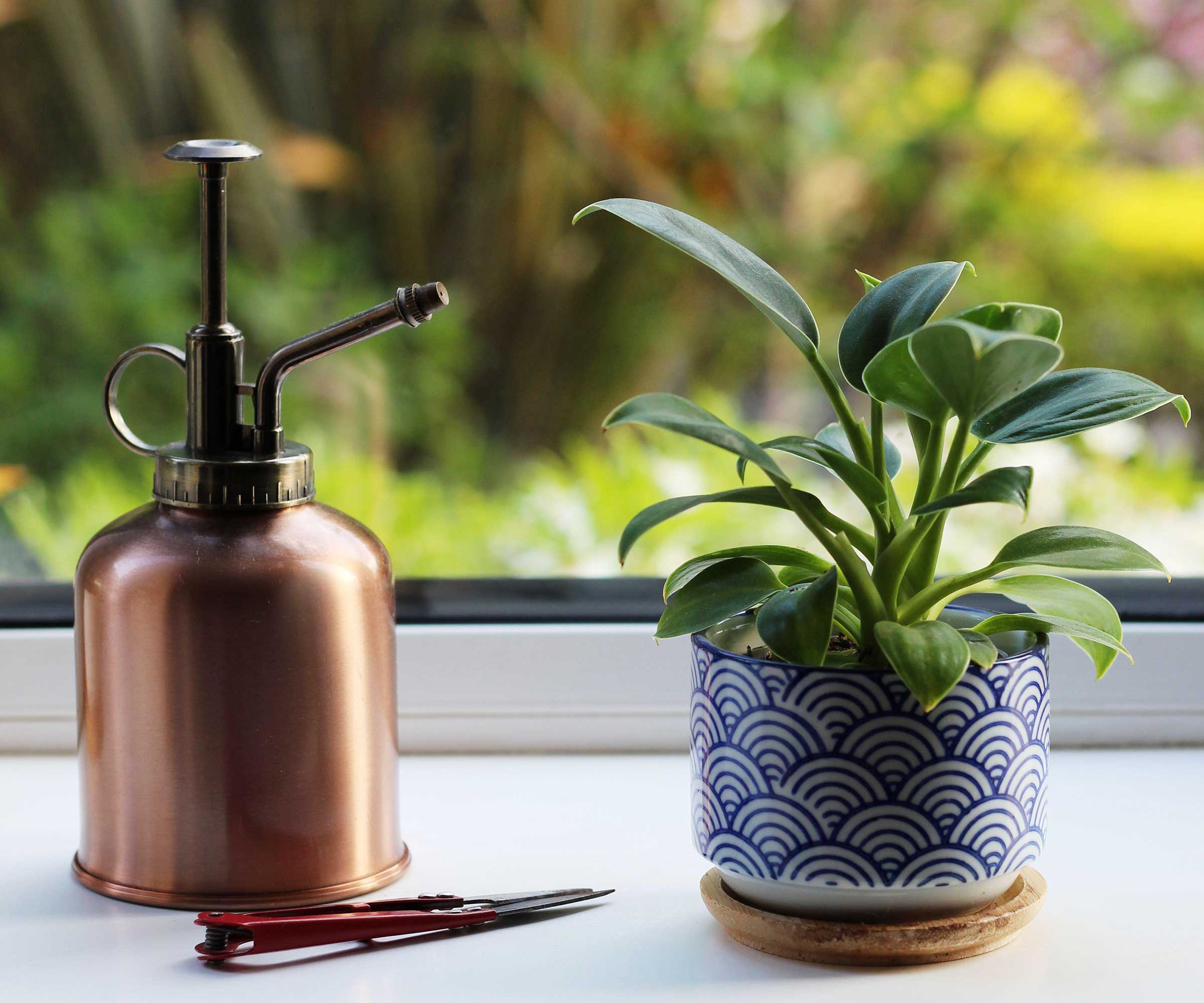How often should you water indoor plants? Get it right with this expert advice
Help your houseplants thrive by watering them at the right time


How often should you water indoor plants to provide the best conditions? Underwatering is always best avoided, of course, but overwatering can be equally detrimental.
‘For indoor plants, the general rule of thumb is to water them thoroughly once a week,’ says horticulturalist Charlotte Bailey of Oh So Garden. However, she adds that watering is an art, just as much as it is a science. 'How often you need to water your plants depends on a few crucial factors, including the type of plant, the climate you’re in, as well as light and temperature levels.’
This guide explains what you need to know to keep your air-purifying indoor plants and the rest of your choices happily hydrated.

Over-watering houseplants can do more harm than good
How to check if indoor plants need watering
‘For most plants, the worst thing you can do is overwater them,’ says Toby Schulz, CEO of Lawn.com.au, which provides advice for indoor as well as outdoor plants. ‘Most of the time, a simple visual check of how dark the soil looks can tell you whether your plant needs its weekly watering, or if it can wait another week.’
Feeling the soil with your fingertips will also provide the information you need. ‘If the top 1-2in of soil are dry to the touch, it’s time to water,’ says Charlotte Bailey. ‘If it’s still moist, wait another day or two before checking again.'
The look of the plant itself can also reveal some telltale signs. Over-watering can cause your jade plant to lose its leaves, and your snake plant to turn yellow. Underwatering can cause air plants to turn brown. Both underwatering and over-watering can cause peace lilies to droop.

Check the top layer of soil with your finger to see if it's time to water
Which factors influence how often indoor plants need watering?
Different types of plants have different requirements when it comes to watering. ‘Set yourself up for success with your new houseplant by looking up the care instructions,’ says Toby Schulz. ‘Some plants are quite high maintenance when it comes to watering (peace lilies) whereas others are extremely low maintenance (Zanzibar gems).’
But there are other factors that will influence how often you should water indoor plants, including the soil, the light, and temperature and humidity.
‘If your plants are bedded in a well-draining mix that contains elements such as perlite or pumice, you’ll need to check your soil’s moisture levels more frequently than if your plants are housed in a plain, but denser, all-purpose compost,’ explains Charlotte Bailey.
The conditions are all important. ‘Is your plant in a bright location with high temperatures?’ asks Charlotte. ‘Thanks to higher levels of transpiration, it will need watering more often than a plant placed in a low-light location.’ For tropical indoor plants, consider buying a mister, such as this one from Amazon, for keeping the humidity levels up in-between waterings.

Misting humidity-loving plants will help keep them happy in-between waterings
How often should you water different types of indoor plants?
Whether you’re thinking of investing in winter houseplants, pet-friendly houseplants, or have other criteria, it’s always important to understand the specific requirements of the plant.
These are some favorite indoor plants and their needs.

John has been a garden journalist for over 50 years and regularly answers readers' questions in Amateur Gardening magazine, including many about houseplants. He has also written four books and has delivered many talks over the years on horticulture.
- Succulents: Because they are one of the most drought-resistant plants, caring for succulents means watering less often than with many other types of plants, perhaps every 10 days or fortnightly. Over-watering can quickly lead to root rot, which can kill them.
- Peace lilies: Peace lily care involves waiting until the top inch or so of soil is dry or when their leaves start to visibly droop before watering – a weekly watering might be right. They like humidity: 'Mist the leaves frequently with lime-free water,' says John Negus. 'Ideally, stand the pot on a tray of pebbles that are kept damp, but don’t allow water to touch the base of the pot.'
- Pothos: Wait until the soil has dried out to water to adopt good pothos plant care habits. Check weekly.
- Orchids: If you’re a newbie to orchid care, be aware that these are often over-watered. 'Moth orchids don’t need a lot of water unless they are in a dry atmosphere,' says John. 'Water with rainwater from the top once a week in the evening, so the water runs through into a saucer beneath the plant. Tip away any left over the next morning. Plants in cooler rooms will need less water.'
What is the best way to water indoor plants?
‘It’s crucial to avoid splashing the leaves,’ says Tiffany Payne of Orangeries UK. ‘Make sure the nozzle of your spraying can is pointing at the soil and not the leaves.’
Water evenly, she adds, watering around the pot rather than just on one side.
It's also best to use rainwater where possible, which has less chemicals than water from the tap.
Sign up to the Homes & Gardens newsletter
Design expertise in your inbox – from inspiring decorating ideas and beautiful celebrity homes to practical gardening advice and shopping round-ups.

Sarah is a freelance journalist and editor. Previously executive editor of Ideal Home, she’s specialized in interiors, property and gardens for over 20 years, and covers interior design, house design, gardens, and cleaning and organizing a home for Homes & Gardens. She’s written for websites, including Houzz, Channel 4’s flagship website, 4Homes, and Future’s T3; national newspapers, including The Guardian; and magazines including Future’s Country Homes & Interiors, Homebuilding & Renovating, Period Living, and Style at Home, as well as House Beautiful, Good Homes, Grand Designs, Homes & Antiques, LandLove and The English Home among others. It’s no big surprise that she likes to put what she writes about into practice, and is a serial house renovator.
-
 How to clean a patio – 6 different methods, and when you must use a chemical cleaning agent
How to clean a patio – 6 different methods, and when you must use a chemical cleaning agentFrom manual scrubbing, natural solutions or calling in the pros, industry experts reveal the benefits and considerations of each method
By Andy van Terheyden Published
-
 Kris Jenner's favorite air fryer, the Ninja Crispi, is the perfect small kitchen solution – it deserves a place on the most compact of countertops
Kris Jenner's favorite air fryer, the Ninja Crispi, is the perfect small kitchen solution – it deserves a place on the most compact of countertopsKris approves of this compact yet powerful air fryer, and so do our own kitchen appliance experts, praising it for its multifunctionality
By Hannah Ziegler Published